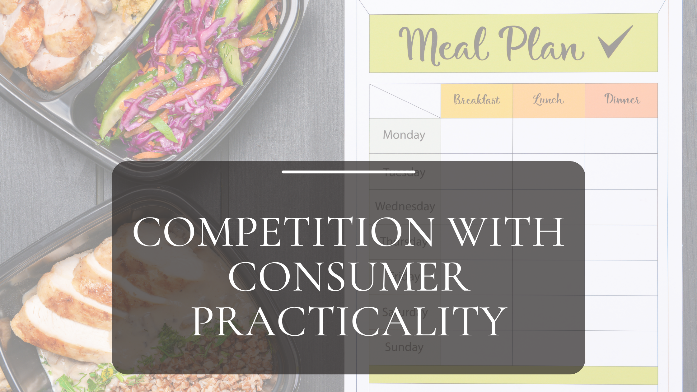Recipe for Restaurant Success in the Age of Inflation
A lot of thought goes into cooking. It’s not just about the quality of ingredients or how much of everything you put in, but also about the emotions mixed in; the purpose of the dish.
Some people cook because it makes themselves happy, while some cook to pass on that happiness. Regardless, it is always comforting to eat food made with warmth; one that makes you remember what your mom’s casserole tasted like.
The same thing can be said when you started your restaurant venture. There’s a lot of story behind it, and emotions embedded in its core. You’ve had your struggles but made it through. However, in the midst of economic instability, you’re uncertain whether your menu or business recipe is cut out for survival.
Why Inflation is a Recipe for Disaster
We thought we’d seen the worst of inflation in May (8.6%), but it surprised us with a new peak in June 2022 at 9.1%. This number is bound to further slam restaurants as their industry is right behind the frontier. Here are a few inflation offshoots that may be hurting your restaurant:

The global supply chain crisis has made it hard for restaurants to source ingredients at a price reasonable enough to maintain adequate profit margins without passing too much burden on their customers.

The reported 21% dip in stock market prices of companies in the S&P 500 index in June 2022, slid us into bear market territory. This occurs when the decrease in stock market prices is at least 20% lower than the 52-week high.
This indicates that investors are becoming more wary of the increased risk in investing during economic instability.
With investors shying away from funding businesses and their losses, companies, including restaurants, need to find a way to self-fund and be self-sufficient until things return to normal.

Price hikes, in a way, help curb the demand when there are limited goods. When this happens, some goods and services are in turn, only made available to people who can afford them, forcing others to try cheaper alternatives.
Consequently, the competition, currently, is not among restaurants, but between restaurants and dining alternatives such as home cooking and ready-to-eat meals.
Recipe for Success
Mask the aftertaste of inflation through this recipe:

Invest in technology and digital transformation to improve operational efficiencies, reduce labor costs, and save money spent on paper and printing. Some examples are as follows:
- Smart Kitchen
- Food Waste Tracker
- Self-order Kiosks
- Mobile App
- Digital Displays
- Digital Menu (QR Code)

Curbside pickup is nothing new. Most restaurants saw its value at the start of the pandemic when contactless transactions were preferred.
Eventually, curbside pickup earned its way to becoming a mainstay as it proved to be the missing piece in restaurants’ omnichannel sales strategy. Through it, you can drive up your sales, boost the customer experience of people who are always on the go, and save up on packaging and delivery costs.

- Simplify your menu.
Review the past months’ sales and find out which dishes from your menu are not performing well and consider crossing them off your house specials.
- Look for alternative ingredients.
Challenge your back of house team to recreate some your menu items using alternative ingredients that are cheaper and more abundant in the market, without compromising the taste and quality. For example, you can top your salad with chickpeas instead of almonds.

The tough competition with dining alternatives shifted the focus of restaurants’ marketing efforts from food to experience. With DIY recipes readily available online, foodies are settling with home cooking.
Still, they may be able to recreate their favorite dish, but they can’t replicate the best service and experience that you can offer. Sooner or later, they will want to step away from the kitchen, relax, and enjoy birthdays, anniversaries, and other milestones at a place where they won’t have to cook and wash the dishes.
Before that time comes, make your restaurant top-of-mind by creating content that highlights the dining experience, the place’s look and feel, the service, and your employees.
Do your research and choose the platform that your audience frequents. Try lifestyle-centric social media channels like Instagram and TikTok.

Food waste contributed by U.S. restaurants is estimated at 22 to 33 billion pounds, annually. Globally, the food service industry contributes around 26% of food waste. What’s more alarming is that data also reveals that up to 10% of food is wasted before hitting a plate.
Reducing food waste is one of the ripples that can drive away inflation because the already limited food supply is further depleted by the massive food wastage in the country.
By taking part, restaurants will not only help combat the crisis but also reduce costs for food production and waste management. Here’s how you can get started:
- Cut portion sizes.
A recent survey report showed that 74% of Americans expect restaurants to cut portion sizes to control inflation.
It is well-known how American restaurants serve oversized food portions that’s too much for the average human. By cutting portion sizes, restaurants are also shaving off a chunk of their expenses for food ingredients and helping decrease the demand that’s overwhelming the market.
- Track food waste.
Use a food waste tracker to be warned ahead of time whether you are going over your set maximum food waste. This also helps you generate data, which you can analyze, to determine the root cause and address the problem.
- Repurpose unused food.
Run promotions and create weekly specials that utilize leftover ingredients before they go bad or expire.
Inflation is that one ingredient that leaves a bad taste in a perfectly cooked and seasoned dish. It will linger for a while and it is up to you to create a recipe that will turn the tables.
You don’t have to do this alone. Talk to us today!








